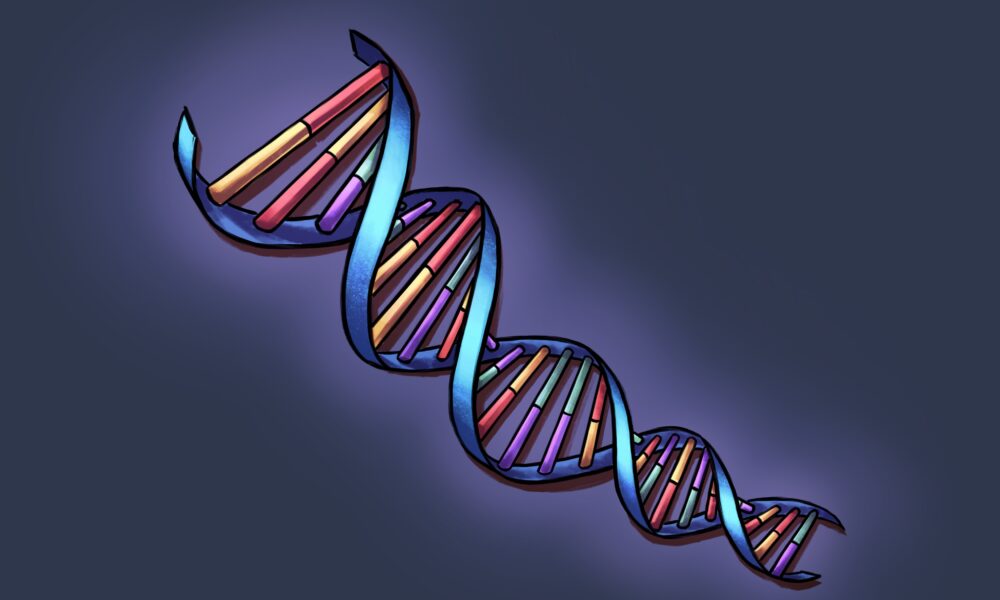In the methodical world of scientific research, there is irony to be found in serendipitous stories of discovery. More often than expected, a scientist’s day in the lab is filled with more head-scratching than “eureka” moments. It is in these moments that a curious scientist would dig deeper, even in the negative data. Alexis Vallée-Bélisle, an associate chemistry professor at Université de Montréal, did just that, eventually coming to invent a fluorescent DNA nano-antenna that glows to indicate a change in the structure of proteins.
The story begins in 2016, when Valleé-Bélisle developed the world’s smallest thermometer. This technology acts as a flambeau torch, where the stick is DNA and the flame is a dye attached to it, glowing bright when the temperature around proteins changes.
However, Vallée-Bélisle told the The McGill Tribune that the team soon realized that the dye was not glowing due to the change in temperature, but due to a change in protein structure. This occurs when the protein performs its function or interacts with other molecules in the cell. The dye is sensitive to the environment around it and thus detects the nanoscale twists in the protein structures.
“It was unexpected,” Vallée-Bélisle said. “But we knew we were on[to] something big.”
“Structure equals function” is a well-known axiom in biochemistry. The proteins in the nails and skin and the proteins in our gut and brain are both made from amino acids, but they work differently because they fold into a variety of 3D structures.
Once the structure of proteins is known, it is easy to predict their function. This knowledge, combined with synthetic biology, can be used to develop drugs that bind specific pockets of the 3D structure to inactivate the viral proteins, in order to fix the misfolded proteins observed in diseases, or to design novel proteins.
Although the field of structural biology took a huge leap forward in 2020 with DeepMind’s AlphaFold2 algorithm—which could computationally predict the 3D structure of proteins from their amino acid composition—research still depends heavily on experimental studies. X-ray crystallography and Cryo-EM are the current gold-standard methods of determining protein structures. But these experiments are complex enough to consume one’s entire PhD, and require expertise in structural biology, limiting their broader use.
“People are struggling to have a simple assay [method] to monitor their favourite protein’s activity,” Vallée-Bélisle said. “We need[ed] to come up with an antenna that probes small changes in the conformation of protein.”
To determine the structural changes of these biological nanomachines, Vallée-Bélisle turned to his favourite molecule—DNA—for nano solutions.
“DNA’s language is simple, its chemistry is much simpler and programmable,” Vallée-Bélisle said. “We have a DNA synthesizer and we can have a [DNA] antenna by the end of the day.”
Researchers repurposed their serendipitous discovery of the DNA antenna to detect the changes in the structure of proteins occurring at the time scales of micro to milliseconds. One of the most important parts of this antenna is the glowing dye attached to the DNA. Since different dyes interact differently depending on a given protein structure, the researchers were able to detect five different types of structural changes in a single protein within months of using the same DNA antenna.
Vallée-Bélisle plans to scale up this technology from detecting one protein structure at a time to detecting 96 possible structures of proteins with different antennas at the same time, all combined on a single palm-sized plate.
“The goal of any scientist is to have your technology out there,” Vallée-Bélisle said. “If we could build those 96 well plate readers then we probably can make [this technology] available to everybody.”
Discoveries like this one will enable scientists to put more time into thinking of solutions and less time mixing solutions in the lab.






